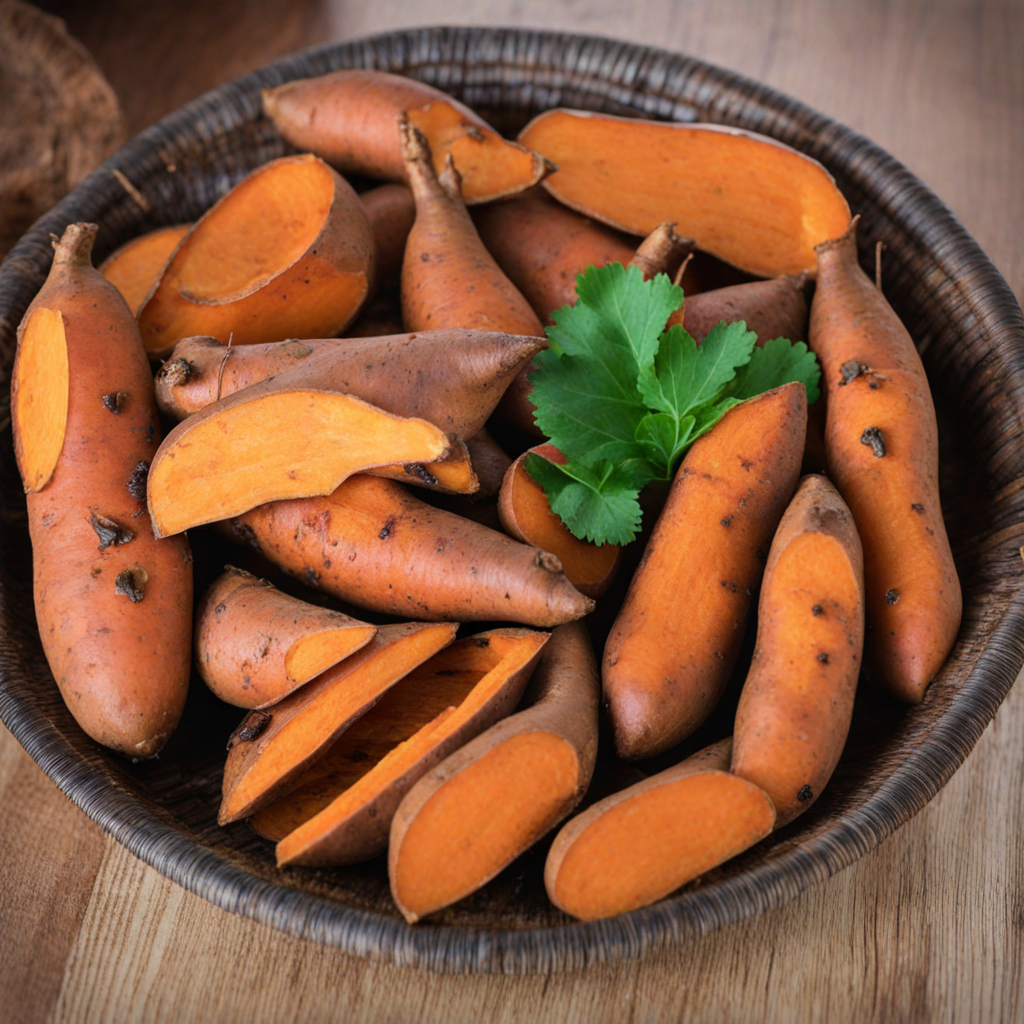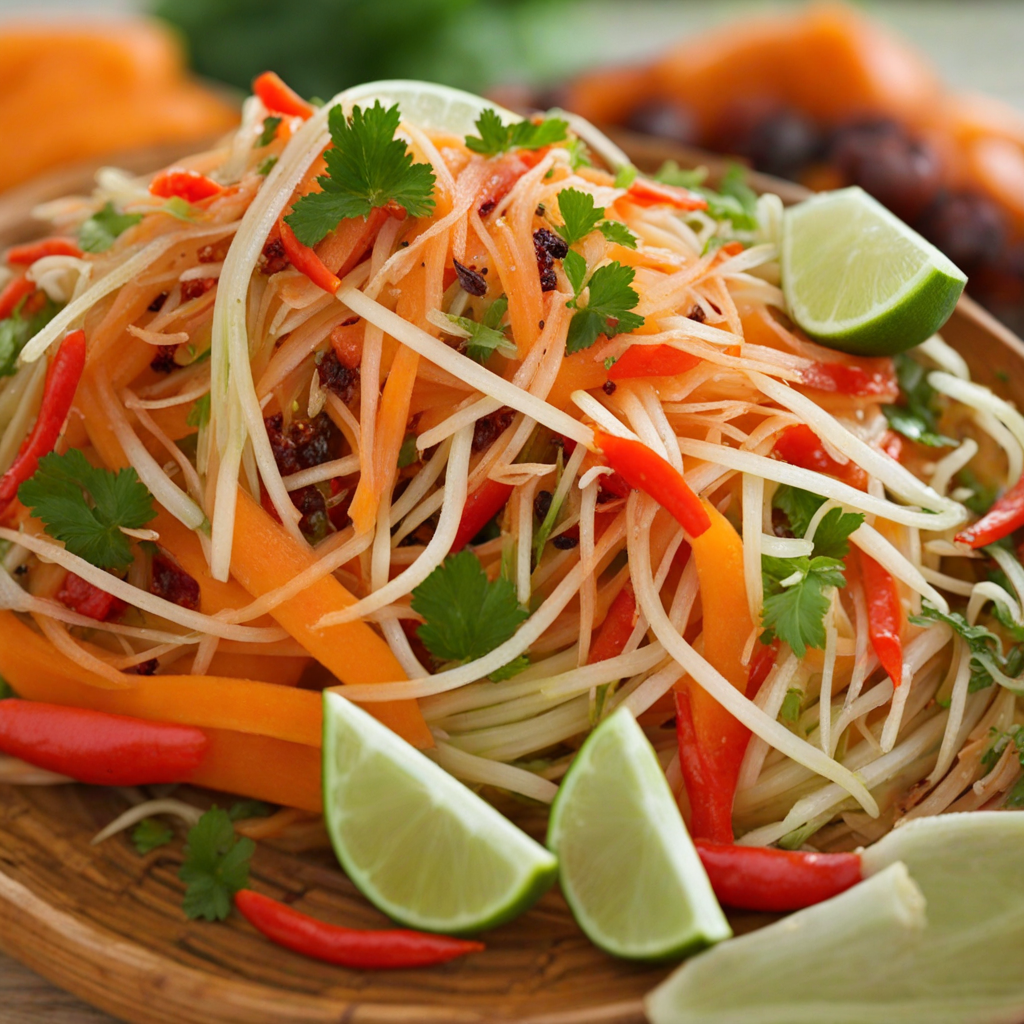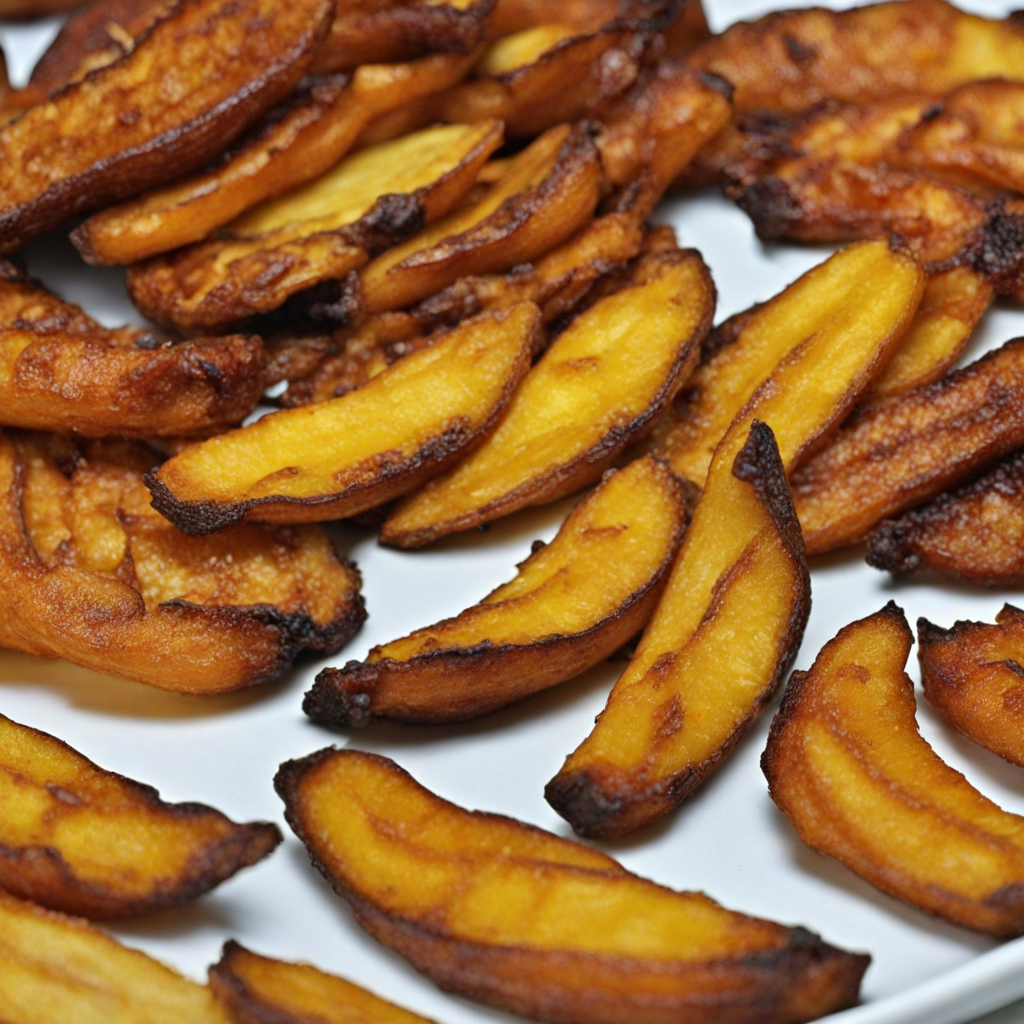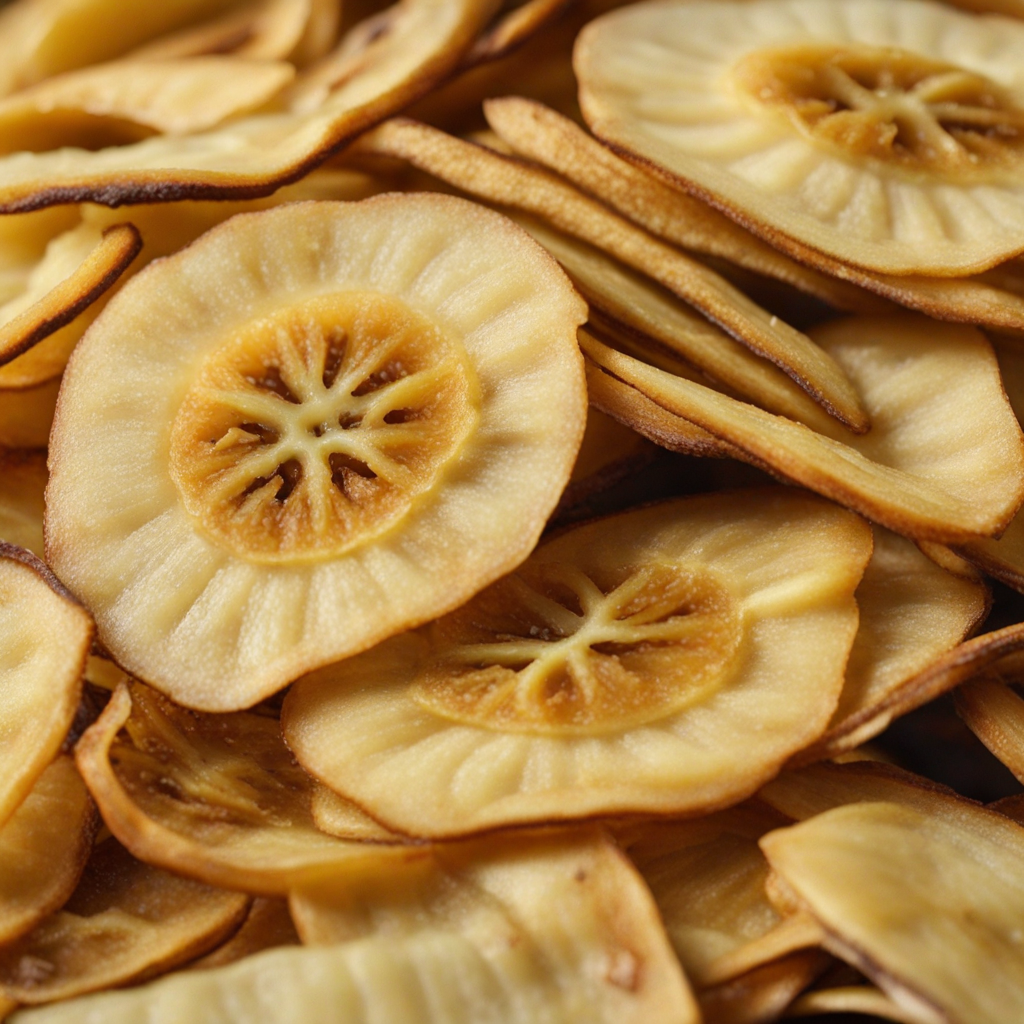Kaukau
Kaukau, commonly known as sweet potato, is a staple food in Papua New Guinea, deeply embedded in the nation's agricultural practices and cultural traditions. The history of kaukau dates back thousands of years, with evidence suggesting that sweet potatoes were domesticated in South America before making their way to the Pacific Islands, including Papua New Guinea. Today, it is a vital source of sustenance for many communities, particularly in rural areas where it is often grown in home gardens. The versatility of kaukau has allowed it to adapt to various cooking methods and regional dishes, contributing to its significance in local diets. The flavor profile of kaukau is subtly sweet, distinct from the more starchy varieties of potatoes found in other parts of the world. When cooked, it possesses a creamy texture that complements a variety of dishes. The sweetness can vary depending on the specific variety and growing conditions, ranging from mildly sweet to intensely sugary. This natural sweetness makes kaukau a popular ingredient not only in savory dishes but also in desserts, where it can be mashed, baked, or steamed to enhance its flavor. Preparing kaukau is a straightforward process that highlights its natural qualities. The tubers are typically harvested from the ground and can be used in numerous ways. In many traditional settings, kaukau is often cooked in an underground oven, known as a "mumu." This method involves wrapping the sweet potatoes in banana leaves and placing them on hot stones, covered with earth, allowing them to steam and cook slowly. This technique
How It Became This Dish
The History of Kaukau: A Culinary Treasure from Papua New Guinea #### Origins and Background Kaukau, the local term for sweet potato in Papua New Guinea (PNG), is more than just a staple food; it is a symbol of resilience, cultural identity, and the agricultural ingenuity of the Melanesian people. Sweet potatoes are believed to have been domesticated in South America, with archaeological evidence suggesting their cultivation dates back over 5,000 years. However, their journey to the lush highlands of Papua New Guinea is a remarkable tale of adaptation and transformation. The introduction of Kaukau to PNG is believed to have occurred between 1,000 to 3,000 years ago, possibly via ancient trade routes or through migration. As the indigenous people settled in the highlands, they discovered that sweet potatoes thrived in the nutrient-rich volcanic soils and the temperate climate. The crop quickly became integral to the local diet, providing a reliable source of carbohydrates and nutrients. #### Agricultural Practices and Cultivation The cultivation of Kaukau is a testament to the agricultural prowess of the Papua New Guineans. Traditionally, sweet potatoes were grown using a method known as "swidden agriculture," or slash-and-burn farming. Farmers would clear a patch of land, burn the vegetation, and plant their sweet potato seeds, allowing the land to enrich itself naturally over time. This practice not only maintained soil fertility but also promoted biodiversity within the farming ecosystem. Kaukau comes in various colors and sizes, with the most common varieties being purple, orange, and yellow. The diversity of sweet potatoes mirrors the rich cultural tapestry of Papua New Guinea, as different regions have developed their unique cultivars. The highland villagers often use traditional farming techniques passed down through generations, demonstrating a deep understanding of their environment and a commitment to sustainable practices. #### Cultural Significance Kaukau holds profound cultural significance in the lives of the Papua New Guineans. It is not merely a food item; it is woven into the very fabric of their social, spiritual, and economic life. In many communities, Kaukau is a symbol of hospitality and generosity. Offering sweet potatoes to guests is a common practice, reflecting the values of sharing and community spirit deeply ingrained in PNG culture. The importance of Kaukau extends beyond mere sustenance; it plays a role in various rituals and ceremonies. For example, during traditional feasts and celebrations, sweet potatoes are often featured prominently on the menu, symbolizing abundance and fertility. In some cultures, Kaukau is even used as a form of currency in trade and bartering, showcasing its economic significance in local communities. Moreover, sweet potatoes are often associated with ancestral stories and myths. In certain cultures, the sweet potato is linked to creation stories, where it is said to have been a gift from the gods, providing nourishment to the people. This spiritual connection enhances the reverence with which Kaukau is treated, elevating it beyond mere food to a cultural icon. #### Development Over Time As PNG moved into the 20th and 21st centuries, the cultivation and consumption of Kaukau continued to evolve. The introduction of modern agricultural practices, such as improved irrigation techniques and hybrid varieties, has allowed farmers to increase their yields. However, many communities remain committed to traditional methods, recognizing the environmental and cultural importance of maintaining their heritage. The economic significance of Kaukau has also grown, particularly with the rise of cash crop farming. In many regions, sweet potatoes are no longer just for subsistence; they have become an important commodity, sold in local markets and contributing to the livelihoods of many families. The cultivation of Kaukau, alongside other crops, has helped communities transition to a more diversified economy, balancing traditional practices with modern agricultural demands. In recent years, there has been a renewed interest in Kaukau, not only within PNG but also globally. With the rise of health-conscious eating and the growing trend of exploring traditional diets, sweet potatoes have gained popularity outside their native region. Their versatility in cooking, nutritional value, and appeal to various dietary preferences have made Kaukau a sought-after ingredient in international culinary scenes. #### Contemporary Usage and Global Recognition Today, Kaukau is celebrated not only in Papua New Guinea but also recognized in various culinary circles around the world. Chefs and food enthusiasts are increasingly incorporating sweet potatoes into their dishes, highlighting their flavor and health benefits. From sweet potato fries to pies and soups, Kaukau's adaptability has made it a beloved ingredient across diverse cuisines. In PNG, the traditional ways of preparing Kaukau continue to thrive. It is commonly roasted, boiled, or mashed, often served with a variety of local ingredients such as fish, greens, and spices. In contemporary cuisine, Kaukau can be found in fusion dishes, showcasing its versatility while honoring its roots. The significance of Kaukau in Papua New Guinea is underscored by initiatives aimed at preserving traditional agricultural practices and promoting local food sovereignty. Organizations and local governments are working to educate farmers on sustainable practices and the importance of biodiversity, ensuring that Kaukau remains a staple in the local diet for generations to come. #### Conclusion Kaukau is much more than a simple tuber; it is a vital part of Papua New Guinea’s history, culture, and identity. From its origins in ancient agriculture to its place in contemporary cuisine, sweet potatoes symbolize resilience, community, and a deep connection to the land. As the world increasingly seeks out sustainable and healthy food options, Kaukau stands as a testament to the richness of traditional knowledge and the enduring legacy of a crop that has fed generations. The journey of Kaukau from the highlands of Papua New Guinea to dining tables around the globe illustrates the power of food to connect people, cultures, and histories.
You may like
Discover local flavors from Papua New Guinea







